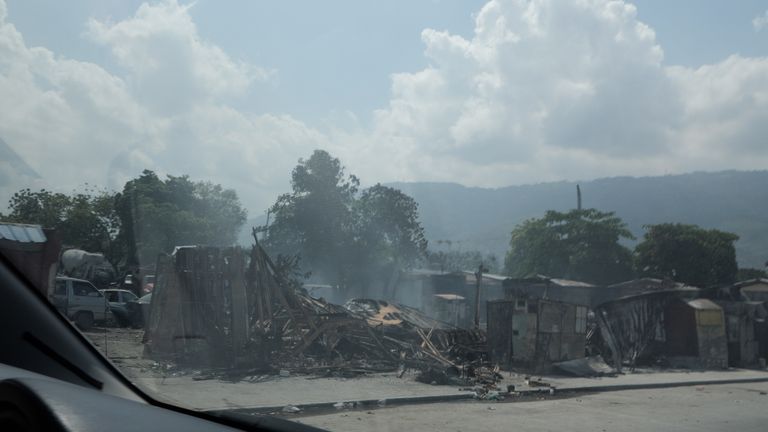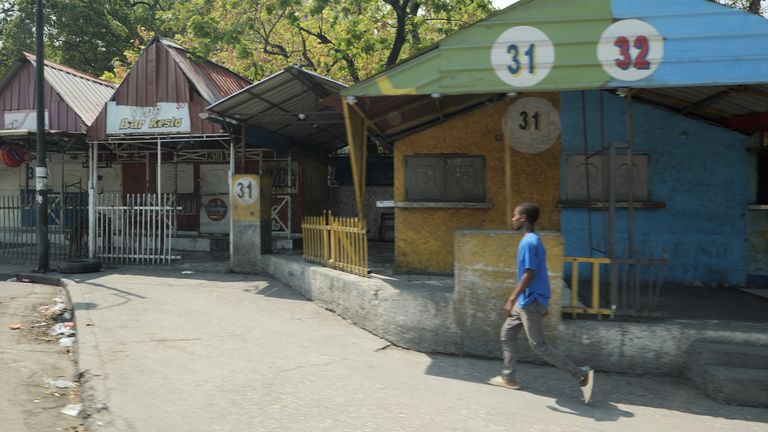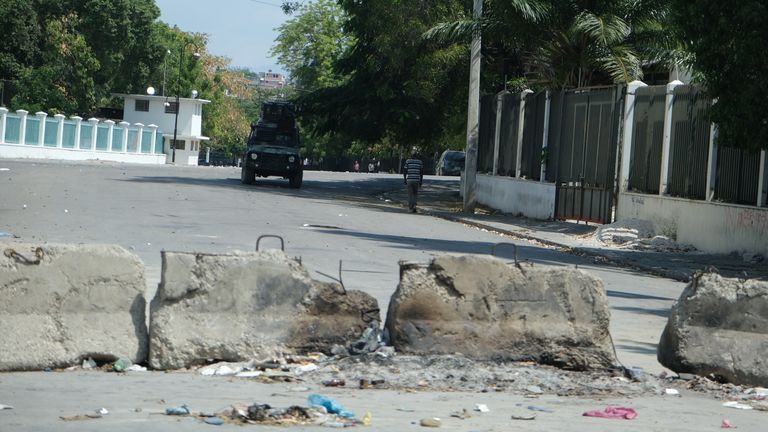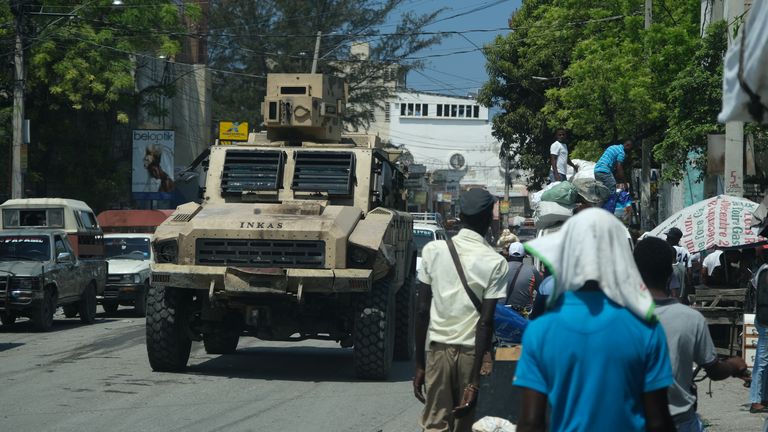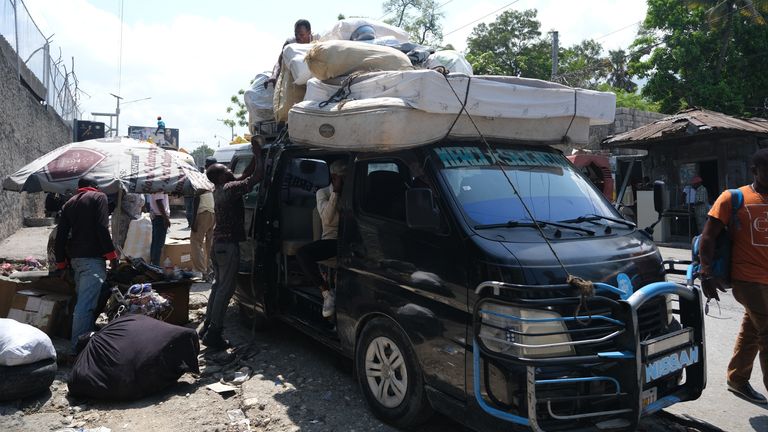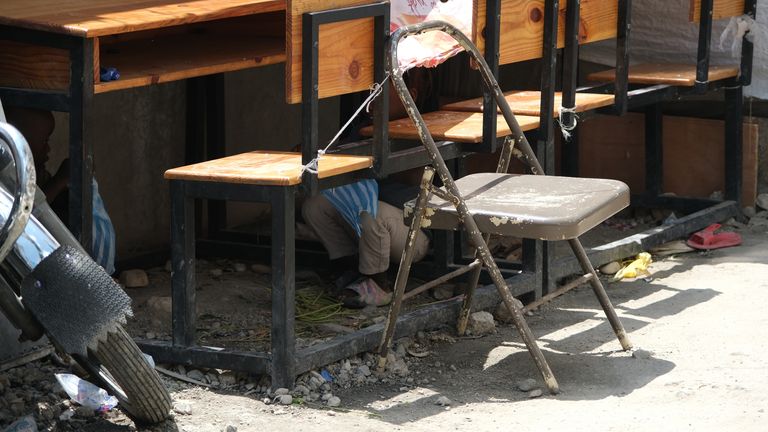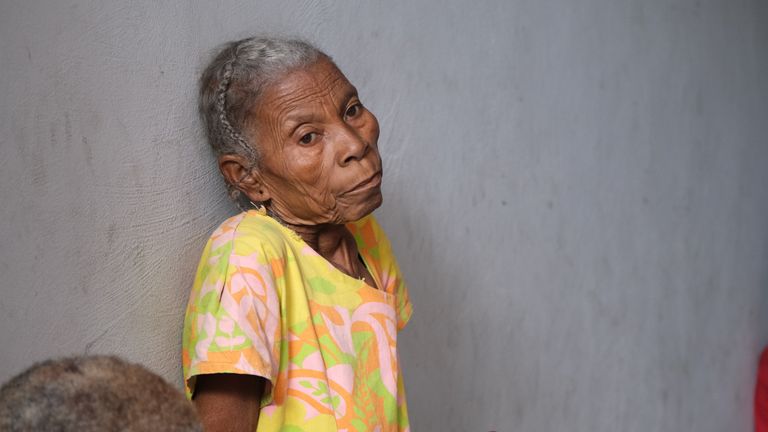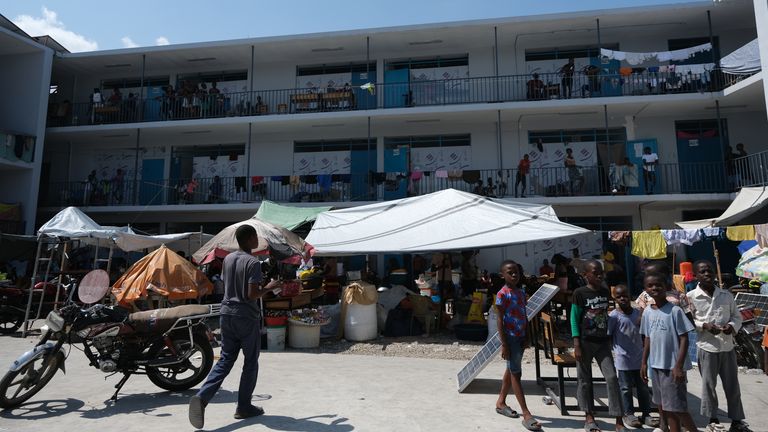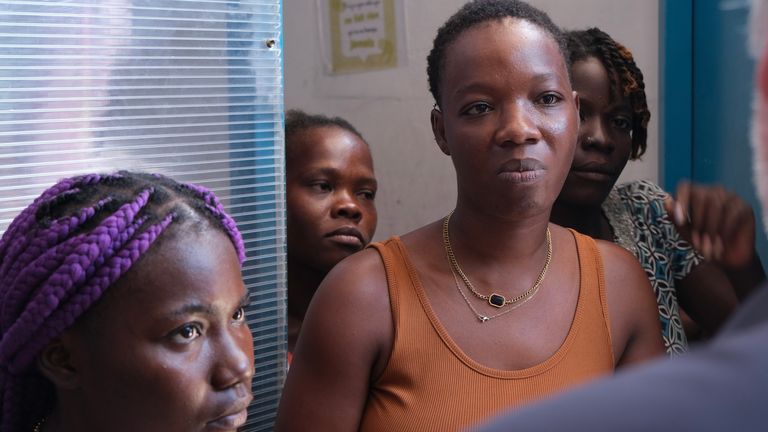Over rubble-strewn and broken roads, we pass the cement barriers of long-gone police checkpoints entering one of the most dangerous districts in Haiti.
In front of us we can see a burning building, and two men pushing a battered pick-up truck.
To our left and right are burnt-out and destroyed businesses, in front of us at a crossroads we pause to film a deserted road, littered with debris and burnt-out cars, flanked by scorched buildings.
This is a battlefield, it’s as simple as that.
What is incredible is that it is downtown Port-au-Prince, the heart of Haiti’s capital, and home to the presidential palace, the French embassy, and various government buildings.
It should be full of people, but it isn’t now.
Fighting is often intense here. And the scenes we are taking in are really just the signature of the violence in this city.
Market kiosks are empty, rows of shops are shuttered and closed down.
We see a lone armoured police vehicle guarding one of the roads leading to the presidential palace, waiting for gang attacks to resume.
And at another barricade, a lone police officer, heavily armed, protects another road leading to government buildings.
We were here on Friday, able to film briefly outside the presidential palace, but by Saturday there was a fierce gun battle in the area, so we filmed from a nearby hotel as police and gang members exchanged fire – the sounds of gunfire crackling in the air.
At another junction, armed police officers wearing black balaclavas and helmets try to direct traffic away from the most dangerous areas. A large, armoured vehicle, riddled with bullet marks, patrols past us.
Around us, people pile their worldly goods onto buses. They’re heading south to family in the provinces.
But there are no safe routes out of Port-au-Prince, and the tickets are expensive because the bus drivers have to bribe the gangs to pass through. Even then, there’s no guarantee of safety from robbery or kidnapping.
Staying is not an option for many.
Some who have nowhere to go and have lost their homes cram into schools and colleges which are now camps for internally displaced people.
Children shelter under school desks. Education has long since been abandoned in these buildings.
Read more:
What is happening in Haiti?
Vigilantes defending Haiti neighbourhood ‘tooth and nail’
No food, no homes, no space
As we talk to people, two gaunt and frail elderly women tap my producer on the shoulder and start pointing at their stomachs.
They say they’re starving, rubbing their stomachs, and asking for food.
Food aid does get here but there is never enough – there are just too many people to feed.
To compound the problem, the ongoing fighting has shut down the airport, and the seaport is sometimes closed down too, meaning food aid can’t get in. And when it does, it’s sometimes looted by the gangs.
Whole families are camping at one school we visit, most have lost almost everything, and they’re stuck.
Jimmy Jean Julian, the civil protection coordinator in charge here, tells me there are 6,500 living people in the school, and 33,000 people displaced by the violence across the capital.
“As a coordinator, I have to assess all the camps and I can say it’s very difficult, not only here at this school, but all over Port-au-Prince.
“They’re very traumatised because they’re not used to living like this, there’s no privacy for showering and other personal hygiene, little food, and they’re like sardines living on top of each other because there’s no space,” Julian said.
‘We’re on the run’
Amongst the displaced living here is Nerlyne Auguste. She is here with her family and says they’ve been forced to move multiple times because of the violence.
“We’re on the run, the gangs chased us out, this is our third camp,” she said.
I asked her if she knows why their homes are being burnt down.
“We don’t know, all we know is we are on the run, our houses have been burnt down and we’re on the run, and we’re not living, there’s no life, we’re in misery, we don’t sleep, we’re stressed, and we don’t eat well,” Nerlyne replied.
What should be a beautiful Caribbean country with a vibrant capital is stuck in a vortex of violence and poverty – and a leadership void.
They’re praying things get better, but many fear it could actually get worse.
